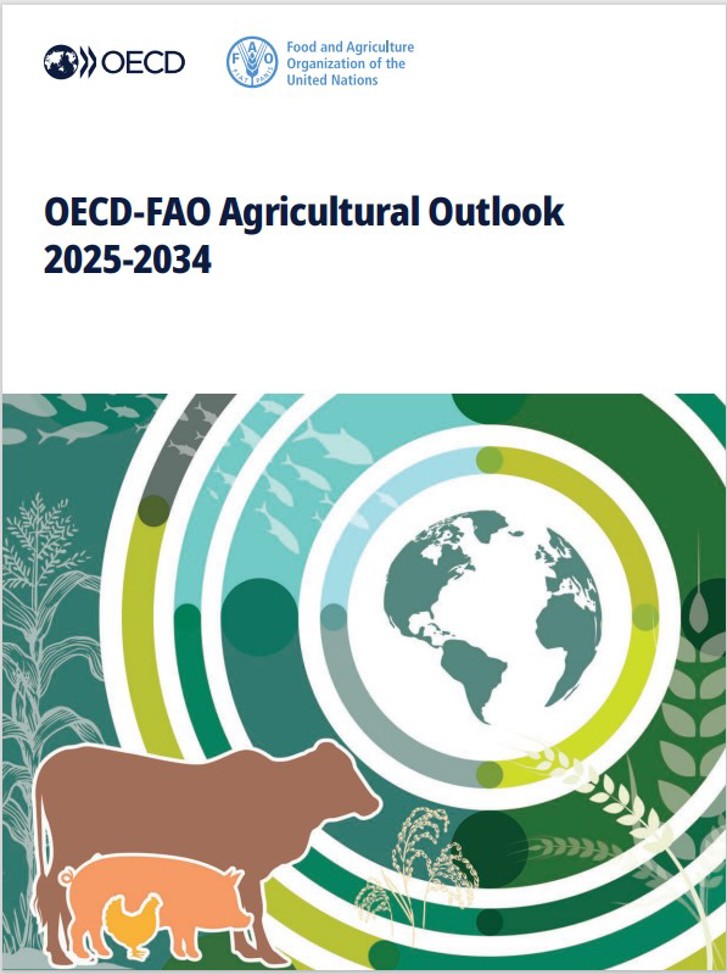Emerging economies expected to drive growth in animal-source food consumption and production over the coming decade, according to OECD-FAO Agricultural Outlook 2025-2034

Production and calorie intake of animal-source products are expected to increase as incomes rise in middle-income countries, but further increases in food production through improvements in agricultural productivity will be necessary to reduce under-nourishment and agricultural greenhouse gas (GHG) emissions at a global level, according to a new report released today by the Food and Agriculture Organization of the United Nations (FAO) and the Organisation for Economic Co-operation and Development (OECD).
The OECD-FAO Agricultural Outlook 2025-2034 serves as a key global reference on medium-term prospects for agricultural and fish markets at national, regional and global levels. The 21st edition of the joint analysis projects that global per capita calorie intake of livestock and fish products will increase by 6 percent over the next decade, driven largely by a rapid rise in lower-middle-income countries, where growth is anticipated to reach 24 percent, nearly four times faster than the global average.
While this rise in intake of nutrient-rich food in lower-middle-income countries will bring average per capita intake to 364 kcal daily, persistent inequalities within and across countries will remain challenging. In low-income countries, average daily per capita intake of animal-source foods is projected at 143 kcal, well below the 300 kcal benchmark used by FAO to analyse the cost and affordability of a healthy diet.
Read more on the website of the OECD